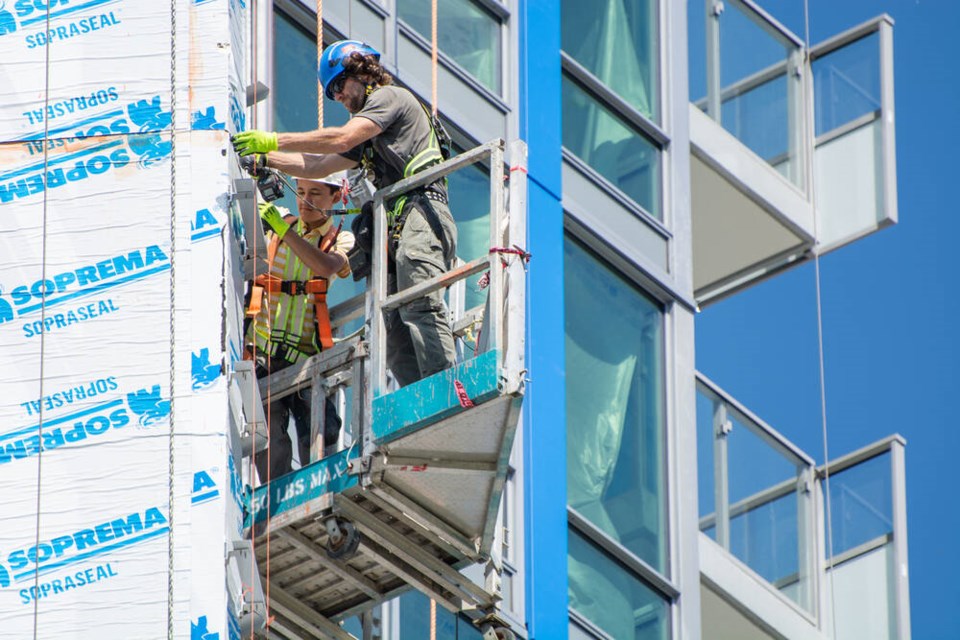The North Shore’s population reached 205,478 in 2023, according to the latest projections from BC Stats, up 7.6 per cent over the last five years.
Of those new residents, 5,704 were either born or moved here in 2022 or 2023, the data shows.
Every winter, BC Stats releases updated population estimates, which are based on census data, as well as trends in births, deaths, migrations, and MSP registrations.
As is always the case, the City of North Vancouver had the most growth locally both in raw numbers and as a percentage, adding 7,403 new residents since 2018, a growth rate of 13 per cent.
The District of North Vancouver has grown by 4,961 new residents in the last five years, or 1.1 per cent per year, on average. The district’s total population as of July 2023 was a projected 94,851.
The District of West Vancouver, meanwhile, posted a gain of 2,274 residents since 2018 for a total of 46,113. That works out to a growth rate of 5.2 per cent over five years.
Metro Vancouver growing faster
The North Shore’s growth, however, lagged behind the province’s growth as a whole, which was 7.7 per cent in the last five years. We’ve also been adding fewer residents than our Metro Vancouver counterparts, with the region seeing 10.4 per cent growth in that time.
The BC Stats report notes that from 2022 to 2023, the province experienced an annual growth rate of three per cent, marking the highest single-year increase since 1974.
The report states that British Columbia’s population is projected to reach 7.9 million by 2046, up 44 per cent compared to 5.5 million today. By 2046, the modelling projects that the North Shore will have grown to more than 277,000 residents.
New housing rules catching up
The level of growth speaks to the urgency seen in the provincial government’s sweeping new housing legislation, which sets housing targets for municipalities, mandates upzoning along transit routes and allows multiplexes on single-family lots by right, said Andy Yan, director of Simon Fraser University’s City Program.
In September, the District of North Vancouver and District of West Vancouver were named to the housing minister’s “naughty list” for failing to build enough new homes to accommodate a growing population, and told they must see through to completion more than 4,000 new strata and rental homes in the coming five years.
As development and population growth are left less and less to the discretion of local councils, the discussion has to become more about accommodation and infrastructure, Yan said.
“What you’ll see in front of you is a ramp up to discussions like SkyTrain to North Van – major transportation initiatives, which we now know are also then attached to density and housing mandates,” Yan said.
Yan said he would not be surprised to see growth in the City of North Van slow down in the years ahead as developable lots become built out and municipal infrastructure becomes maxed. But, he said, the two North Shore district municipalities have a lot of progress to make.
“[The population growth rate] is almost three times bigger in the City of North Van than it is in West Vancouver,” he said.
Without enough new housing options, communities will stagnate and become more reliant on commuters for their workforce, he added.
“How much is our housing market shaping demographics as opposed the other way around?” Yan asked. “No change is not an option.”
Canadian immigration growing
Much of the population growth is due to immigration, with most newcomers settling in the Vancouver area, the BC Stats report finds. Canada has one of the highest population growth rates among developed nations due to high levels of international migration, the report adds.
B.C.’s fertility rate of 1.11 was the lowest in Canada in 2022, and without immigration, our population would be in decline.
The report also notes that there are record numbers of non-permanent residents arriving – more than 600,000 in 2022 alone, making them the leading contributor to the country’s growth. As of 2023, 8.2 per cent of B.C.’s population was made up of non-permanent residents.



